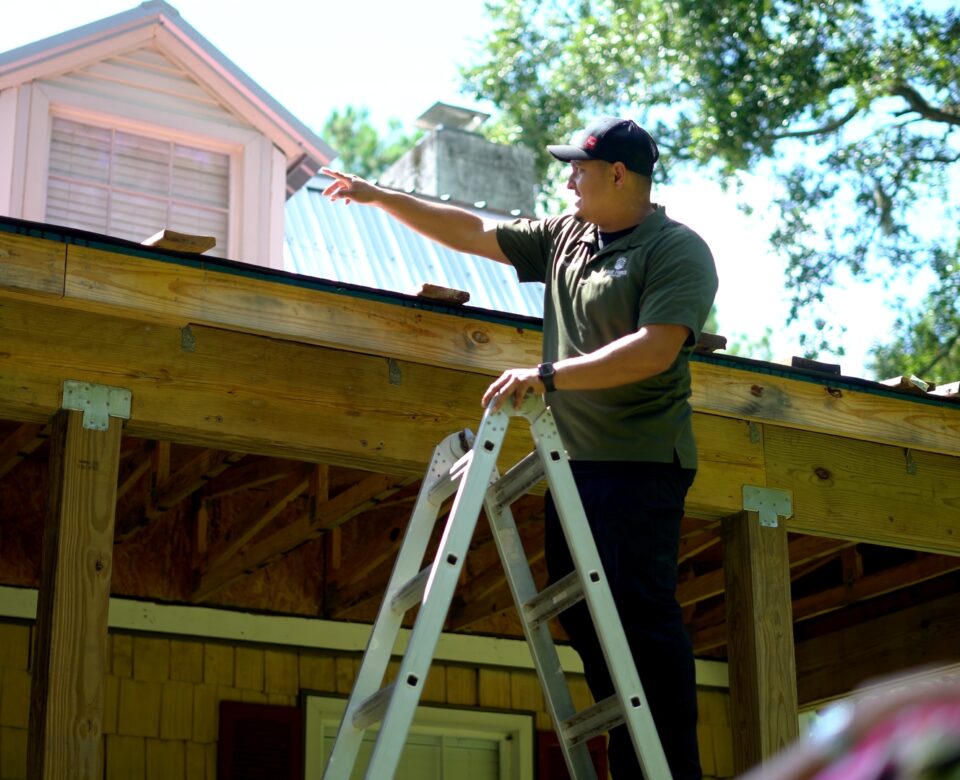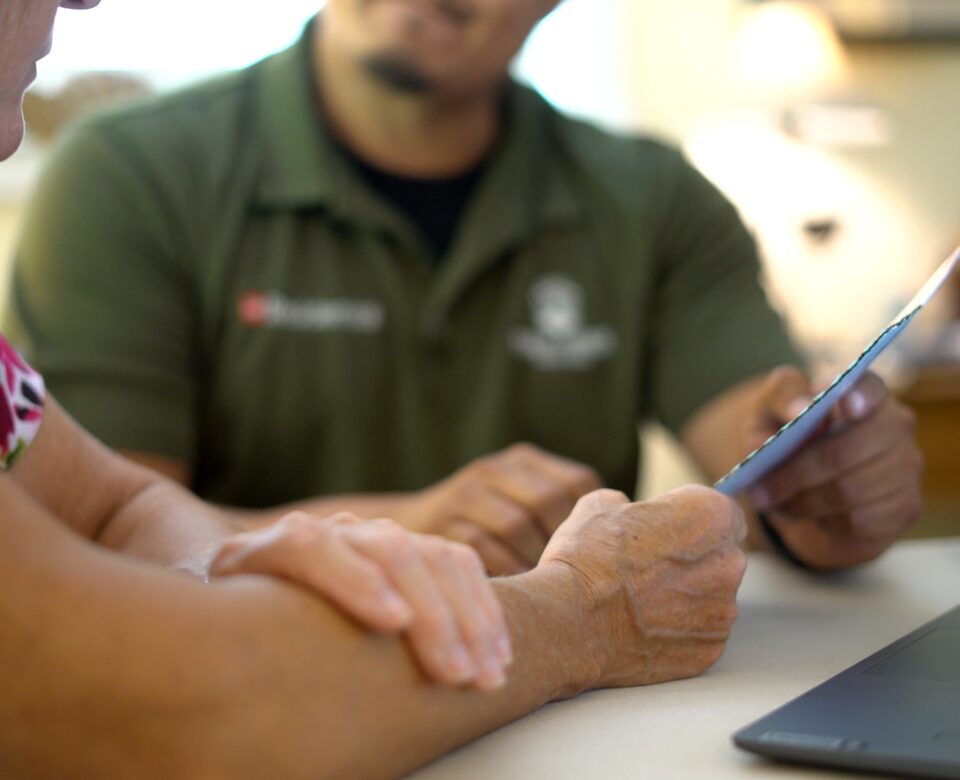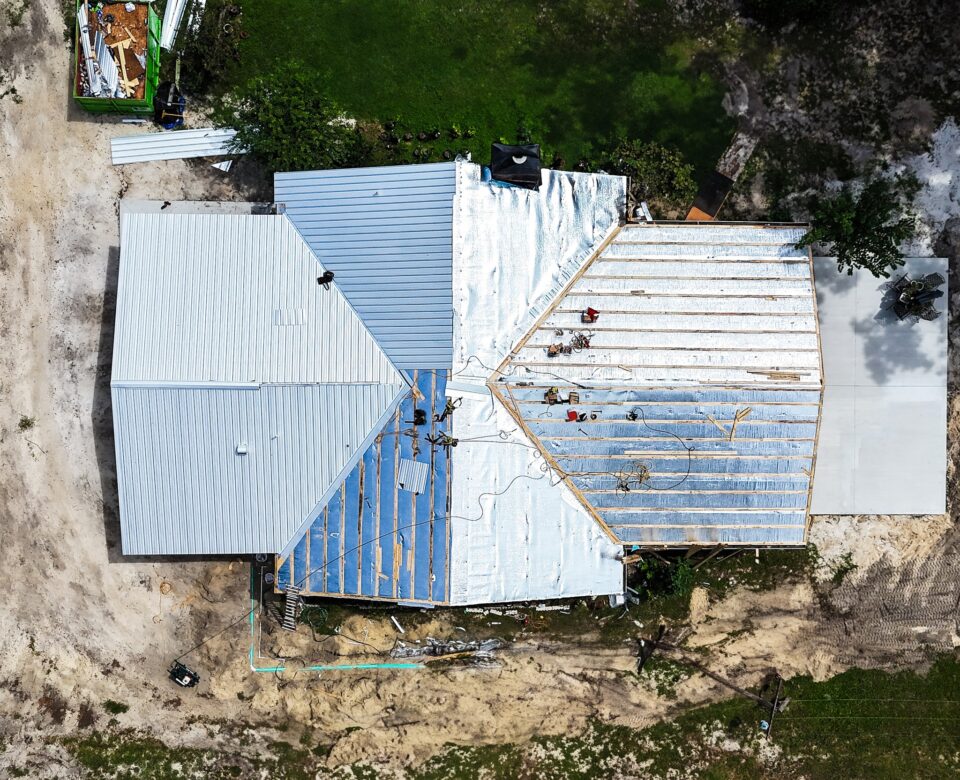
Essential Hurricane Roof Protection Tips Every Homeowner Needs
June 12, 2025
Our Essential Hurricane Preparedness Checklist for Florida
July 10, 2025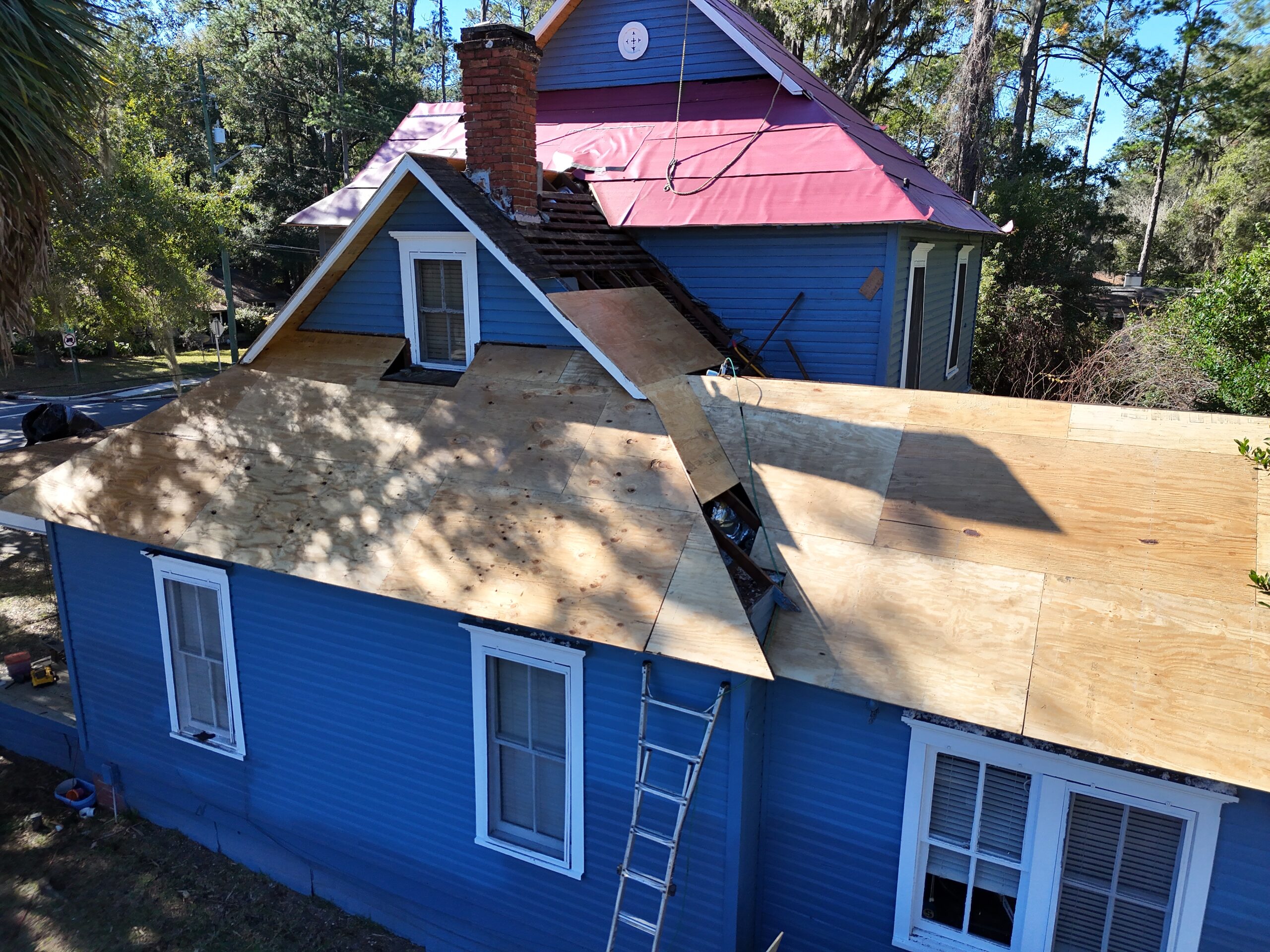
Understanding Hurricane-Resistant Roofing
Importance of Picking the Right Roof
Living in Gainesville, FL means that when hurricane season rolls around, your roof plays the superhero role, standing strong as your home's first protector. Picking hurricane-resistant roofing isn't just about playing it safe; it's about saving yourself from the horrors of roof repair after a nasty storm. These materials aren’t just for show; they’re built to take on whatever wild weather Florida skies throw their way, keeping your home snug and safe.
Think about it: the peace of mind you get knowing you don't have to deal with leaks or busted shingles after a storm blows over? That's priceless! Plus, it saves you the money and headache of having to fix or totally overhaul your roof. For handy tips on battening down the hatches before a storm, check out our hurricane preparedness checklist.
Things to Keep in Mind for Hurricane-Ready Roofs
Choosing the right roof means weighing a few important things. Here’s what you gotta consider:
1. Wind Resistance: Check if your materials can take a serious beating from strong hurricane winds. They should have ratings stating they can handle some serious gusts.
2. Impact Resistance: Let’s face it, flying stuff ain’t uncommon when storms hit. Your roof should be tough enough to fend off stuff like branches or debris, so it's not breaking apart under every smack.
3. Water Resistance: Water sneaking in is a big no-no. You need stuff that's practically rainproof and keeps stormwater out.
4. Durability: Whatever you choose should stick around season after season without needing to be babied every other month. It’s gotta be tough as nails to keep doing its job.
5. Weight: Keep an eye on how heavy those materials are. Your roof might need to bulk up to support something too weighty, so make sure you’re not overloading your home’s framework.
| Factor | What’s It About? |
|---|---|
| Wind Resistance | Handles wild hurricane winds |
| Impact Resistance | Withstands hits from debris |
| Water Resistance | Keeps leaks and moisture at bay |
| Durability | Built to last without constant repairs |
| Weight | Works with your home’s bones, won't weigh it down |
Thinking through these points helps you nail down the ideal hurricane-resistant roof for your place in Gainesville. To dive deeper into securing your roof during hurricanes, swing by our piece on hurricane roof protection tips.
Types of Hurricane-Resistant Roofing Materials
Picking the right roof can really make a difference in keeping a house safe when those stormy winds come knocking. Let's dive into three popular roofing choices that are tough and ready to handle whatever a hurricane throws their way.
High-Impact Asphalt Shingles
These sturdy asphalt shingles are built to tackle strong winds and rogue pieces of flying debris. Reinforced with fiberglass or polymer mesh, they're tough stuff.
| Feature | Description |
|---|---|
| Wind Resistance | Up to 130 mph |
| Impact Rating | Class 4 (the best you can get) |
| Lifespan | Give or take 20-30 years |
| Maintenance | Hardly any fuss at all |
These shingles are flexible too, so they're less likely to snap, crackle, or pop under pressure. Want more tips on keeping your roof in top shape? Have a look at our hurricane roof protection tips.
Metal Roofs
When it comes to hurricane protection, metal roofs are no pushovers. Aluminum, steel, or copper—all three are solid choices for weather toughness.
| Feature | Description |
|---|---|
| Wind Resistance | Up to 160 mph, hang on tight! |
| Fire Resistance | Top-tier Class A |
| Lifespan | They'll last you 40-70 years, no sweat |
| Maintenance | Barely lifts a finger |
These roofs come with panels that lock together, adding a bit of oomph to resist winds. Plus, they make water runoff a breeze, keeping leaks at bay. Check out our hurricane roof damage prevention tips for more pointers.
Clay and Concrete Tiles
Heavy and hardy, clay and concrete tiles hold their own against the wrath of nature. They might weigh more, but that's part of their charm—they're wind-resistant and steadfast.
| Feature | Description |
|---|---|
| Wind Resistance | Up to 125 mph, pretty solid! |
| Fire Resistance | Class A coziness |
| Lifespan | Up to a century—50-100 years |
| Maintenance | Needs a bit more TLC here and there |
These tiles don’t just stand up to fire, they keep your home cooler too, a handy trait for those storm-battered regions. Curious for more on how to gear up your house for the storm season? Head on over to our hurricane preparedness checklist.
When it comes to weathering the storm, choosing the right roof material makes all the difference. From reliable asphalt shingles to steadfast metal roofs, or the robust clay and concrete tiles, each option holds its ground against Mother Nature's wild temper.
Additional Features for Enhanced Protection
If you're serious about keeping your roof intact when hurricane winds come a-knocking, it's not just about picking the right materials. You can boost your home's defenses with some extra protective features that mean business when it comes to standing up to Mother Nature.
Sealant and Weatherproofing
Think of your roof like a boat—if you don’t want it to sink in the rain, it better be sealed tight. Good-quality sealants can fill in those pesky gaps at seams, joints, and edges. And weatherproofing? It's like giving your roof an extra raincoat. It helps fend off water and that pesky wind that wants to sneak right on in.
| Feature | Function |
|---|---|
| Sealant | Fills in those cracks and crannies |
| Weatherproofing | Keeps the water and wind at bay |
Wanna arm yourself with more knowledge? Check our roof protection tips for hurricanes.
Reinforced Roof Decking
When winds rage, it’s the solid decks that hold their ground. Reinforced roof decking isn't just a fancy term—it’s like giving a backbone to your roof. You can beef up your roof with tougher materials or add in some extra support layers.
| Material | Wind Resistance Rating |
|---|---|
| Standard Plywood | Holds its own up to 110 mph |
| Reinforced Decking | Smiles at the storm up to 150 mph |
Got your eye on preventing roof disasters? Check out more tricks at roof damage prevention tips for hurricanes.
Protective Coatings
This isn’t just about slapping on a coat of paint. Protective coatings make your roof a tough cookie. These coats reflect those killer UV rays, keep your house cooler, and put another defensive line against water.
| Coating Type | Benefits |
|---|---|
| Reflective Coatings | Bounces back that summer sun, ups energy efficiency |
| Moisture-Resistant Coatings | Keeps leaks out, stops mold before it starts |
Adding these protective layers is like sending your roof to the gym to bulk up for hurricane season. Wanna dig more into this? Head over to our hurricane preparedness checklist.
Putting these plans into action means you're not just talking about protecting your house—you're doing it. If you're living in places like Gainesville, FL, where hurricanes like to drop by, investing in these beefed-up defenses makes sure your home weathers the storms.
Installation and Maintenance Considerations
Keeping your roof in tip-top shape is your best bet when hurricanes come huffin' and puffin'. Gainesville folks, here's what you gotta do to make sure your roof can hang tight when the storm comes a-knocking.
Proper Installation Techniques
Getting that hurricane-ready roof nailed down right is where it all starts. Here's what you need to keep in mind:
-
Tight As a Drum: Fung the screws and nails that are good with hurricane vibes. No lifting allowed on this dance floor! Make sure your roofing bits get nailed and bolted down snugly.
-
Overlap and Seal Up: Picture it like a raincoat for your house. Shingles, metal, whatever your flavor—get them overlapping, edges sealed, and you’ll keep that pesky rain from sneakin’ in. Throw in some weatherproof wraps for extra peace of mind.
-
Solid Ground Up Top: A beefy roof deck is king. Use thicker plywood or OSB that's latched on with hurricane clips. Think of it as putting a strong backbone on your roof.
-
Edge and Flash Like a Pro: Good flashings and tough corners mean no sneaky wind or rain can gang up on ya. Make sure seams and edges are rock solid.
-
Call the Pros: Not everyone can do the hurricane hustle. Bring in roofers who know their stuff, and they'll make sure your roof’s up to code and ready for action.
Regular Maintenance Practices
The roof’s up there working hard for you, so it deserves a little TLC before a hurricane strolls by. Here's how to show your roof some love:
-
Twice-a-Year Checkup: Climb up and take a peek now and then—especially before hurricane season rumbles in. Sniff out cracks, shingles playing hooky, or any flashing that's losing its grip.
-
Gunk-Free Gutters: Water should flow, not hang around like a nosy neighbor. Clean those gutters of leaves and whatnot so they don’t overflow and cause trouble.
-
Branch Knockdown: Trim those trees back, ya hear? Loose limbs flying around in a storm spell trouble for your roof's well-being.
-
No Space for Mossy Freeloaders: Sweep off any moss or algae that think they’ve found a home on your roof. Moisture and roofs don’t mix.
-
Fix It Pronto: Don’t let small troubles turn into big headaches. See a loose shingle or a leak? Patch it up right quick.
-
Sealant Love: Give seals and weatherproofing bits a refresh every few years so they stay strong against leaks and such.
Treat your roof right—install it soundly and keep it maintained, and it’ll keep you dry when the wind starts to howl. For more roofing wisdom, check out our handy guide on hurricane roof protection.
| Maintenance Task | How Often |
|---|---|
| Roof Peek-Over | Twice a year |
| Gutter Tenancy | Every few months |
| Tree Barbering | Once a year |
| Moss Expulsion | When needed |
| Quick Fixes | When needed |
| Seal Retouch | Every couple of years |
Stick to this playbook, and Gainesville homeowners can lock in their weather-resistant status. Discover more steps for battening down the hatches with our all-encompassing hurricane checklist.
Benefits of Investing in Hurricane-Resistant Roofing
There are perks galore for folks in Gainesville, FL, who go with hurricane-resistant roofing. Let’s dig into why this choice rocks (literally and figuratively).
Enhanced Home Protection
Hurricane-resistant roofing materials are the superheroes of roofs. Made to brave high winds, pelting rain, and flying debris, they have your back when skies turn furious. By fortifying your home this way, you cut down on the worry of roof damage pocketing a place during one of those Florida storms.
Take a gander at our full rundown on how to beef up roof safety in our article on hurricane roof protection tips.
| Roofing Type | Wind-proof (mph) | Toughness (Class) |
|---|---|---|
| Impact-Resistant Asphalt Shingles | Up to 130 | Class 4 |
| Metal Roofing Works | Up to 140 | Class 4 |
| Clay or Concrete Tiles | Up to 125 | Class 3 or 4 |
Possible Insurance Discounts
When your roof is decked out for hurricanes, you might score some insurance breaks, too. Install these robust materials, and those premium checks might shrink. Insurers dig tough roofs because they sip down the chances of big claims when storms come knocking.
If insurance baffles you, check our detailed guide on hurricane roof insurance claims.
Long-Term Cost Savings
Going hurricane-resistant isn't just a short-term win. Sure, it might cost a few more bucks when you start, but the savings roll in with fewer repairs needed. These roofs last longer, laugh harder at hurricanes, and mean less cash spent fixing them up. You dodge massive repair bills since the roof stands tall when hurricanes try their worst.
You'll keep getting the most bang for your buck by doing regular checks and easy upkeep. For the low-down on how to give your roof a good life, see our piece on hurricane roof damage prevention.
Investing in sturdy roofing is a smart move for anyone living in breezy, stormy spots like Gainesville, FL. You get ace protection, save on insurance, and sidestep big repair bills too—it's like giving your house a suit of armor. To make sure your place is storm-ready, don't forget our hurricane preparedness checklist.

